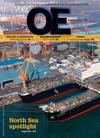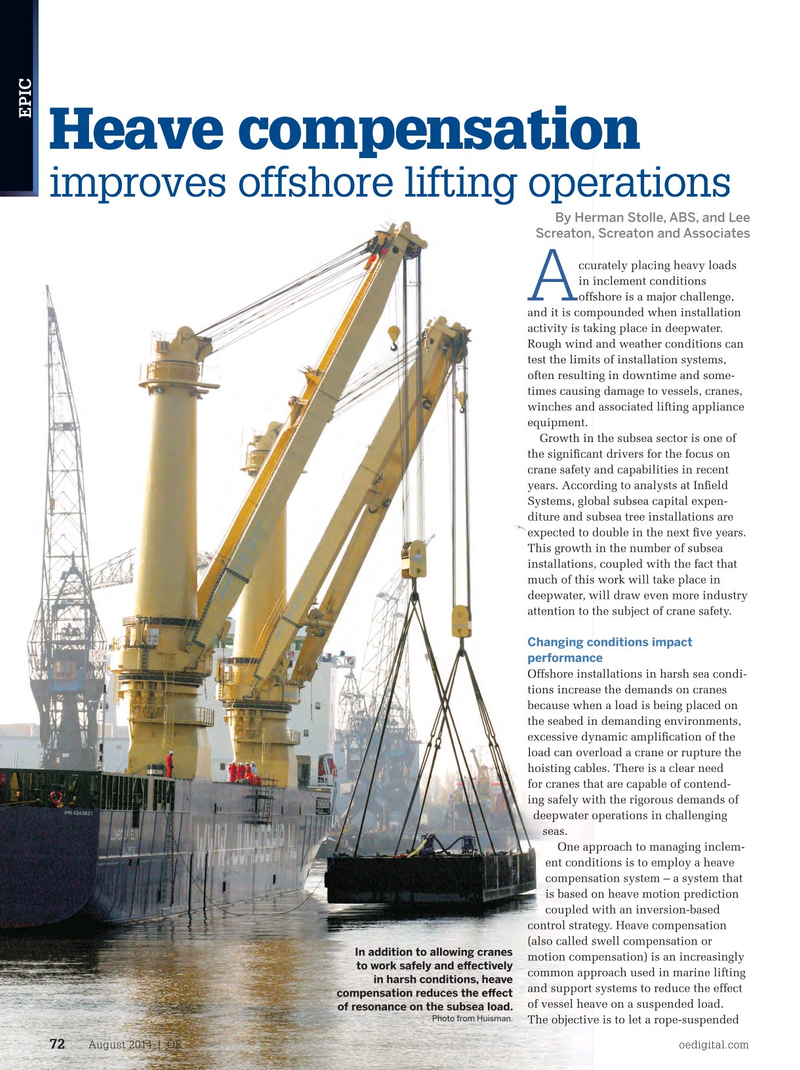
Page 70: of Offshore Engineer Magazine (Aug/Sep 2014)
Read this page in Pdf, Flash or Html5 edition of Aug/Sep 2014 Offshore Engineer Magazine
EPIC
Heave compensation improves offshore lifting operations
By Herman Stolle, ABS, and Lee
Screaton, Screaton and Associates ccurately placing heavy loads in inclement conditions
A offshore is a major challenge, and it is compounded when installation activity is taking place in deepwater.
Rough wind and weather conditions can test the limits of installation systems, often resulting in downtime and some- times causing damage to vessels, cranes, winches and associated lifting appliance equipment.
Growth in the subsea sector is one of the signifcant drivers for the focus on crane safety and capabilities in recent years. According to analysts at Infeld
Systems, global subsea capital expen- diture and subsea tree installations are expected to double in the next fve years.
This growth in the number of subsea installations, coupled with the fact that much of this work will take place in deepwater, will draw even more industry attention to the subject of crane safety.
Changing conditions impact performance
Offshore installations in harsh sea condi- tions increase the demands on cranes because when a load is being placed on the seabed in demanding environments, excessive dynamic amplifcation of the load can overload a crane or rupture the hoisting cables. There is a clear need for cranes that are capable of contend- ing safely with the rigorous demands of deepwater operations in challenging seas.
One approach to managing inclem- ent conditions is to employ a heave compensation system – a system that is based on heave motion prediction coupled with an inversion-based control strategy. Heave compensation (also called swell compensation or
In addition to allowing cranes motion compensation) is an increasingly to work safely and efectively common approach used in marine lifting in harsh conditions, heave and support systems to reduce the effect compensation reduces the efect of vessel heave on a suspended load. of resonance on the subsea load.
Photo from Huisman.
The objective is to let a rope-suspended
August 2014 | OE oedigital.com 72 072_OE0814_EPIC5_ABS.indd 72 7/22/14 9:20 PM

 69
69

 71
71